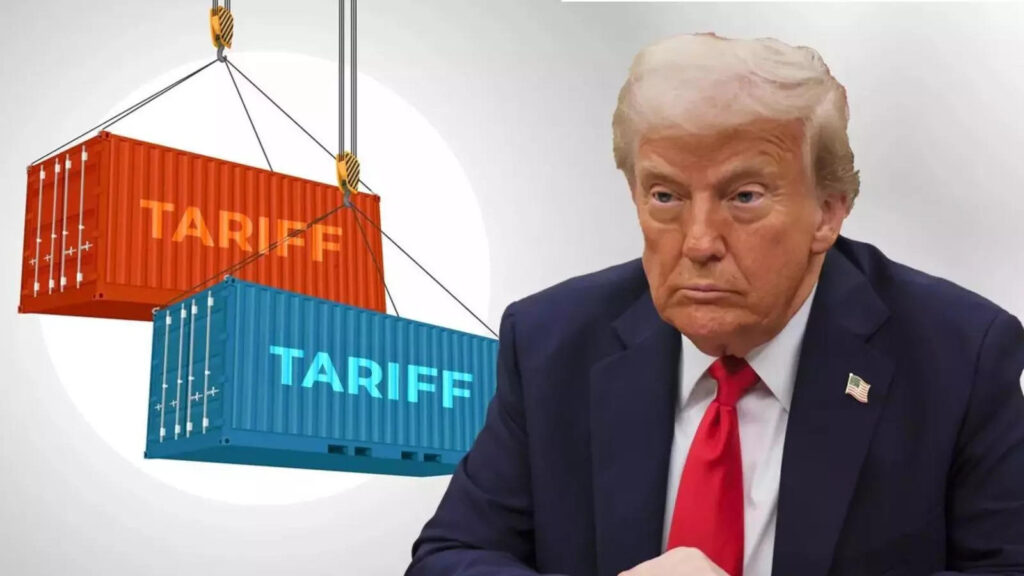By Arun Kumar
President Trump knows what he wants from the rest of the world but it appears he may not have worked out how to achieve it. Since February 1 this year when new tariffs were announced, there have been rapid flip flops on policy.
On April 2, ‘protectionist tariffs’ were announced on the US’ trading partners. But, on April 9 President Trump postponed implementation by ninety days, except for China. China retaliated in spite of Trump’s threat of punitive tariffs on any nation that retaliates. This set off a chain of retaliations and the tariff levels between the two escalated to 125 percent by China and 145 percent by the US.
Such tariffs make trade between these two nations unviable because the prices of items imported by them from each other could double. Even if producers reduce their margins of profit, prices would rise substantially. And, if the US dollar weakens further as a result of loss of confidence in the US economy, the inflation rate would be even higher.
The US also backtracked on high tariffs on electronic gadgets (like, mobile phones), due to its heavy dependence on their import and pressure from the CEOs of corporations. But, a day later, it announced that special tariffs would be levied on these items within two months. China escalated the trade war by restricting the exports of rare earths, a commodity in which it has a monopoly and which is crucial for manufacture of semi-conductors.
President Trump has now announced that he would levy heavy tariffs on pharmaceuticals which had been exempted so far. But he said he would reduce tariffs on the auto sector – it was among the first to face high tariffs. China, one of the largest buyers of passenger airplanes, has further retaliated by telling its airlines to stop taking delivery of Boeing planes.
In reaction to these flip flops, financial markets have swung widely, adding to uncertainty. To get his way, President Trump is attacking everyone who has suggested caution. The US Federal Reserve Chair, Jerome Powell, cautioned Trump about his agenda. Trump reacted by openly asking how one could retire Powell early.
This undermines the autonomy of the US Central Bank. To push his agenda, Trump does not mind destabilising the long established institutions of the US. He has attacked the autonomy of universities and also wishes to replace the head of the income tax department.
All this suggests that President Trump had not worked out how he would achieve his goal of unilaterally gaining from global trade. For him, the large US current account deficit of $1.13 trillion in 2023 is proof that the USA is being taken advantage of. But, he forgets that the US runs such huge deficits year after year because of the dollarisation of the world economy. It implies that the rest of the world is financing US prosperity and enabling it to live beyond its means by supplying cheap exports. This is especially true for the developing world which supplies cheap wage goods, given its low wages.
The federally mandated minimum wage in 2024 in the US was $7.25, but, many states pay above $10 and even $16.28. As compared, in China, in Guangdong, the minimum hourly wage is about $1.2. Thus, apart from other factors, the wage differential enables a company using the same technology in China as in the US to produce the item at a much cheaper cost.
So, while President Trump presents his argument for levying tariffs as one of fairness, it is the US that has been benefiting at the expense of other nations. So, not only does he want the US to continue to live beyond its means, he wishes to increase this phenomenon by extracting more concessions.
His strategy is to scare nations into submission, dangling before them the large US market. But China is receiving special treatment for two reasons. First, the US has the largest deficit in trade with it and second, it has become a threat to US’ global strategic dominance. Further, Trump does not seem to want to deal with other trading partners collectively has been the case under WTO since 1995. He is isolating China and dealing with it individually. He wants to cut ‘90 deals in 90 days’.
Exports to the US are set to decline due to tariffs and there will be consequent price rise in the USA. This would lead to an emergence of surpluses in the trading partners, notably in the biggest trading partners of the US – China, EU, Canada and Mexico. This could lead to a lower level of inflation and output in the partner countries would also reduce.
To reduce their surpluses, if nations resort to dumping on each other, a tariff war will break out. This will raise prices everywhere and lead to cuts in production globally as demand declines. Such a generalised tariff war will be more dangerous for the world economy compared to if the USA alone raises tariffs and others retaliate against it only. It will also become a more protracted problem.
President Trump’s recent wavering on policies is perhaps due to the realisation that his moves will hurt the US more than others. The CEOs of big US corporations have expressed their unhappiness. The public protest against Trump’s policies, whether against attacks on universities, cut in size of government, issue of migrants or tariffs, may be other factors.
India needs a nuanced approach and should not go into it alone. Small economies have few bargaining chips and would have to give the concessions demanded by the US. If the US economy goes into a long term recession due to Trump’s policies and lack of trust in the US, those putting all their eggs in the US basket could lose out.
India has a $45 billion trade surplus with the USA. Trump has been calling India ‘tariff king’ and wants concessions. This surplus is small in the overall global reckoning but he wants it reduced. So, negotiations are likely to be one sided with India conceding. The Indian government has been bending over backward to mollify Trump and has already unilaterally cut back key tariffs. It feels weak since it produces 3.4 percent of world GDP and has 1.8 percent share of merchandise exports. It claims to be one of the first to be negotiating a trade deal.
A trade deal is not easy due to India’s technological weaknesses. India has not benefitted from previous bilateral and FTA agreements. It has been negotiating with EU for 23 years and with Britain since 2021 without reaching a conclusion. The US wants big concessions, especially in agriculture. That would be difficult to concede given poverty in that sector in India.
Trump’s bullying is not working because its largest trading partners are ready to levy retaliatory tariffs. The alliance of the rich countries is fraying and trust in the existing world order is dissipating. If nations negotiate individually with the US they will be forced to concede.
The rest of the world needs to act in concert. EU and Canada may join the grouping given that they were bullied first. A joint approach offers an opportunity to the world to return to a softer form of capitalism and a fairer global order than the one initiated in Marrakesh in 1994. This external pressure would supplement the internal pressures building up in the US. There is already a decline in the US’ credibility as reflected in the rise of US Treasury Bonds yields.
The alternative global strategy has a chance to succeed because Trump has simultaneously attacked all other countries including its allies. If BRICS and EU act in concert the US economy will hurt and bullying will stop within months.
It is not that the rest of the world will not be impacted given that the US is the biggest market, but if they hang together they would be less impacted. It appears that China has understood this and is trying to build a coalition. It has opened talks with EU and South-East Asian nations and offered concessions to India. This will also benefit India in its US negotiations.
China will no doubt have to play a central role by assuring other nations that it would play fair and not resort to dumping. Many nations worry that China may dump its surpluses. China has been accused of dumping in the past. But dumping subsidises other nations and cannot persist over decades as that would imperil one’s own prosperity. The substantial increase in China’s per capita income would not have been possible with continuous dumping.
Apart from other factors, China has built its strength due to its R&D efforts and its wages being a fraction of those in the advanced countries. India has even lower wages but China outcompetes it.
President Trump has misdiagnosed the problem faced by the USA. It is due to the basic crisis of capitalism and not due to higher tariffs by other countries. A new division of labour has been emerging in the world between high technology and intermediate technology production. This undermines so-called ‘good employment’ in the US.
Tariffs cannot resolve this problem and will only aggravate it. If the rest of the world acts in concert, in spite of difficulties, it will force the US to retreat. President Trump’s policy flip flops indicate the confusion and that he does not have a path for achieving his goal. (IPA Service)
Courtesy: The Leaflet

 India In Urgent Need To Save Its Cities, People, And The Economy
India In Urgent Need To Save Its Cities, People, And The Economy 